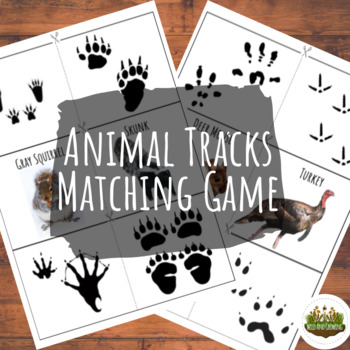Animal Tracks Matching Game
- PDF
What educators are saying
Also included in
- Looking for a unique way to teach about animals and their adaptations? Need an outdoor component in your classroom? My Animal Tracks Bundle will get your students learning about animals in their backyards and how their feet have helped them survive in their environment. In addition to learning aboPrice $13.30Original Price $19.00Save $5.70
Description
Engage your students in a fun matching memory game where they will learn about animal tracks. This resource is a great time-killer and overall fun, Montessori inspired, way to learn about animal tracks. Learning about animal tracks can help students deduct adaptations for animals and their habitats. It is also a great activity to do outdoors.
This product features 16 different animals:
- Deer
- Raccoon
- Rabbit
- Opossum
- Porcupine
- Coyote
- Gray Squirrel
- Skunk
- Beaver
- Black Bear
- Bobcat
- Red Fox
- Deer Mouse
- Wild Turkey
- River Otter
- Weasel
Why use this resource?
This is a great game to get children learning about animals and their behavior or beginning to learn how to track animals in the wilderness. It's also a great way to teach animal adaptations and how animals survive in their environment. This resource is great to get your class outside in any weather, but especially on snowy or muddy days.
How to play:
After downloading the resource you will need to cut out the cards. Print an extra copy to keep for yourself as an answer key. The animals and their tracks directly follow one another.
This set can be played in many different ways. Here are two examples I like using with my students.
- Testing your knowledge, which animal track goes with which animal?
- Memory game: Place all cards face down on a hard surface. Then, select two cards at a time. If they match, set them aside. If they do not match, flip them face down again. Continue until all matches are found.
You might also like:
Consider following me on Teachers Pay Teachers to get alerted when new resources are listed. New resources are 25% off for the first 24 hours they are live. It pays to follow me.
Remember that reviewing resources earns you free TpT credits which you can use to get more TpT products. I love receiving reviews because they help me grow as a seller.
Other ways to connect with me:
As always, thank you,
Hannah
Wild and Growing






